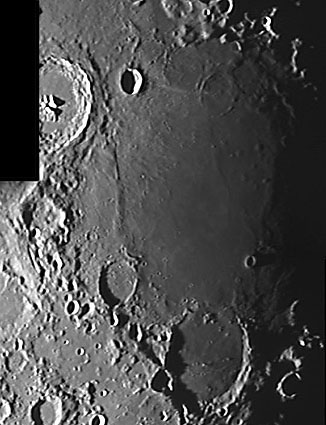Difference between revisions of "May 4, 2004"
| Line 6: | Line 6: | ||
</tr> | </tr> | ||
<tr> | <tr> | ||
| − | <td colspan="2"><div align="center | + | <td colspan="2"><div align="center">[[File:LPOD-2004-05-04.jpeg|LPOD-2004-05-04.jpeg]]</div></td> |
</tr> | </tr> | ||
</table> | </table> | ||
Revision as of 20:52, 19 January 2015
Inside Nectaris
Image Credit: Peter Berry |
|
Inside Nectaris Mare Nectaris is one of the smallest mare on the floor of an impact basin. This low sun mosaic by Peter Berry provides a close-up view of relations between the mare lavas and adjacent impact craters. The center of the mare is mostly unscarred and is the top of a relatively thin (~ 1 km thick) frozen lava lake; most of the action is nearer the mare's edges. At top left (NW) is Theophilus, whose ejecta cut into and overlays the nearby mare - Theophilus is obviously younger than the mare. At the bottom of the image is Fracastorius which was tilted toward the center of the basin and then flooded with mare lava - Fracastorius formed during the period of lava flooding. At the north end of Nectaris is the ruined crater Daguerre. Its called a ruin on the assumption that it was originally a normal impact crater that has been nearly completely overwhelmed by mare lavas. It could be a smaller, and more deeply covered version of Fracastorius, and it probably is. But there are some peculiar aspects that suggest local volcanism too. Daguerre has an associated 300 km2 pyroclastic deposit, and has peculiar double rims near its northern end. And in case any one is interested in odd analogues, Peter points out the resemble of Fracastorius, with its ovoid shape, pockmarked surface, and the rounded-off edges to a prickly pear cactus pad! Related Links: Technical Details: Tomorrow's LPOD: May 4 Eclipse Pix |
Author & Editor: Technical Consultant: A service of: |
COMMENTS?
Register, and click on the Discussion tab at the top of the page.




